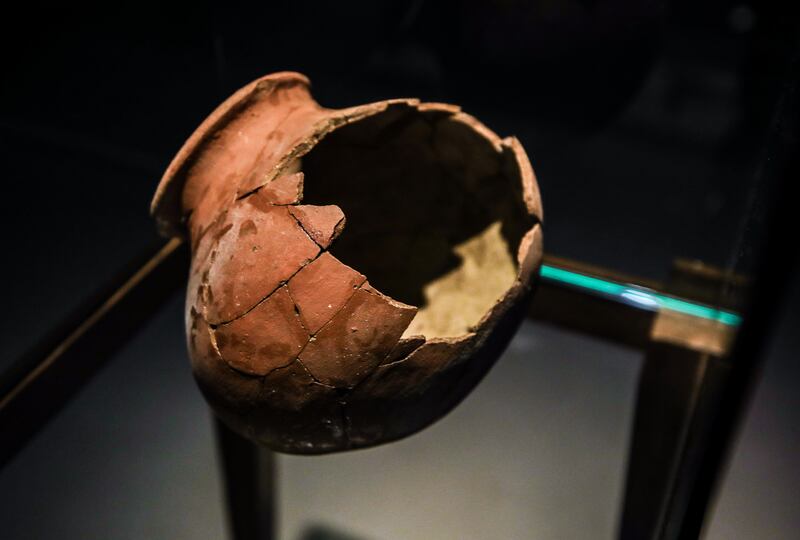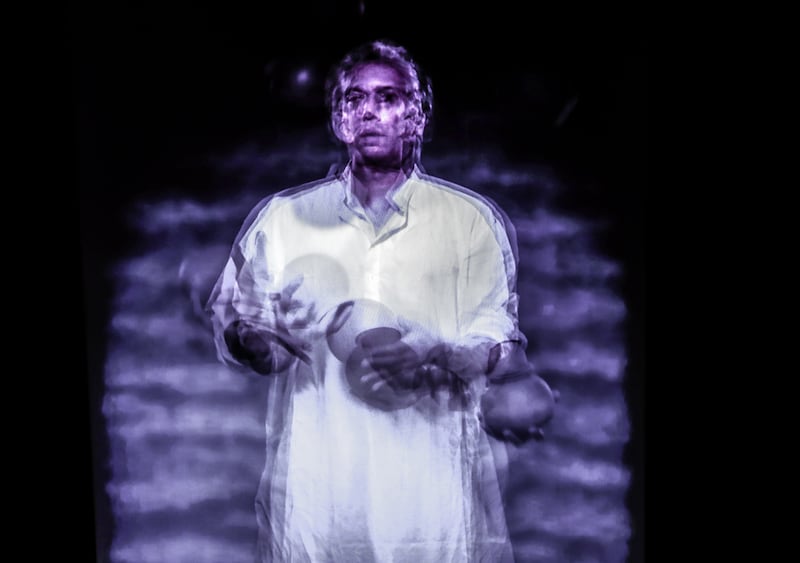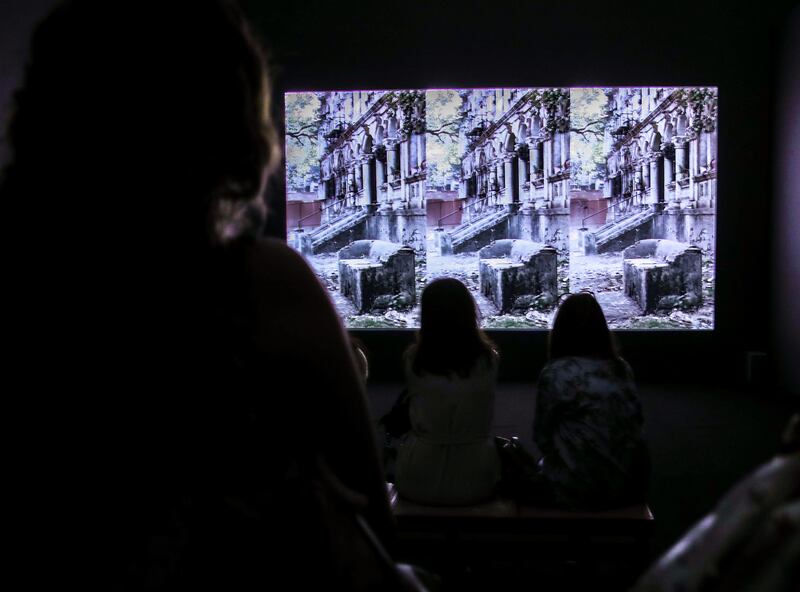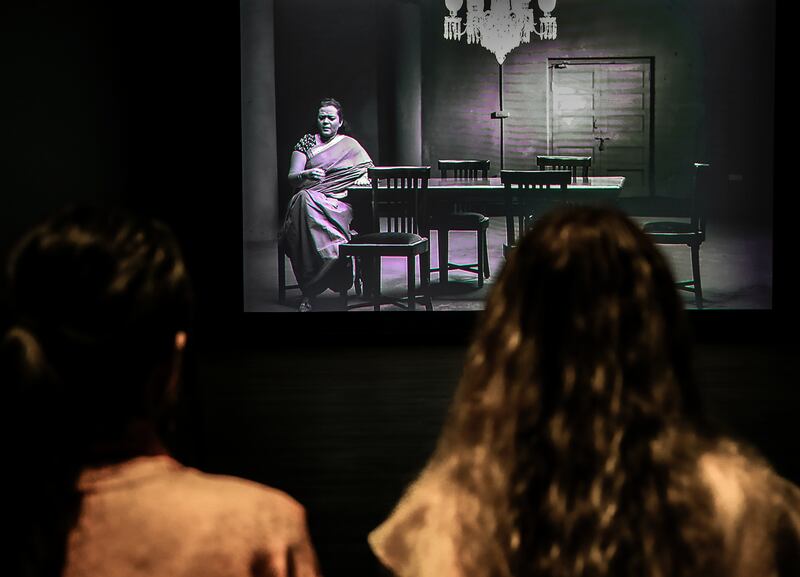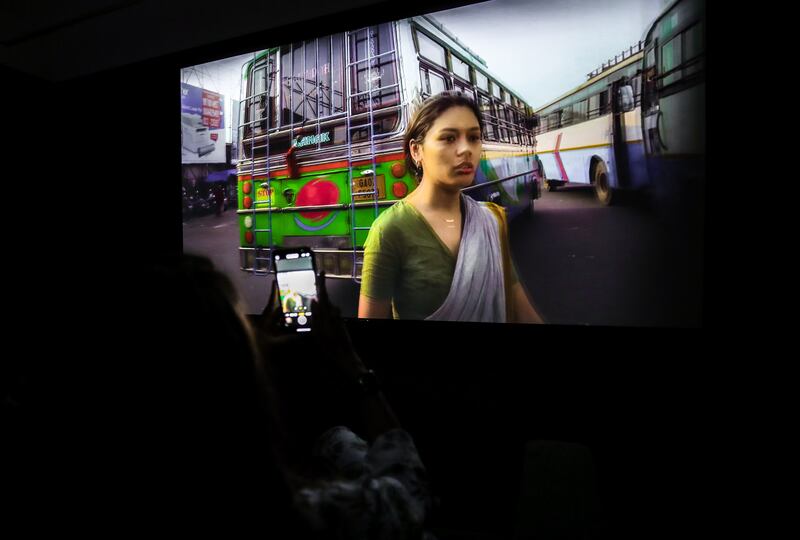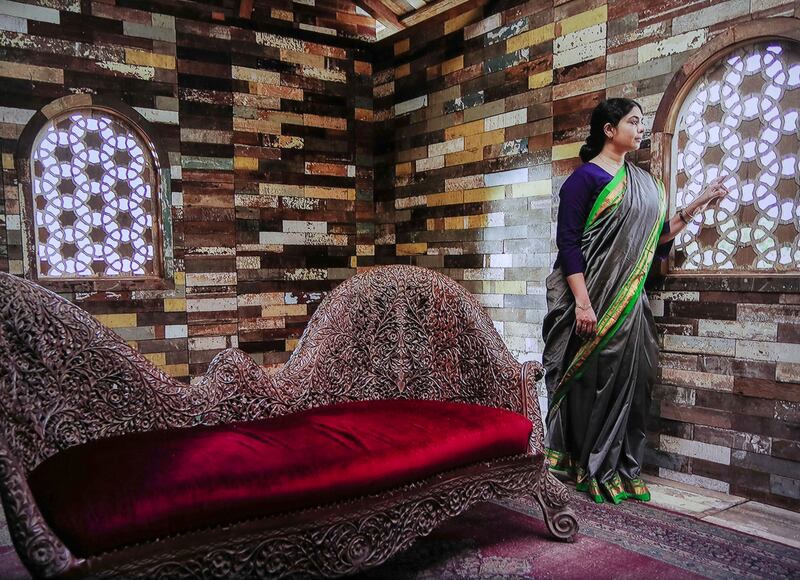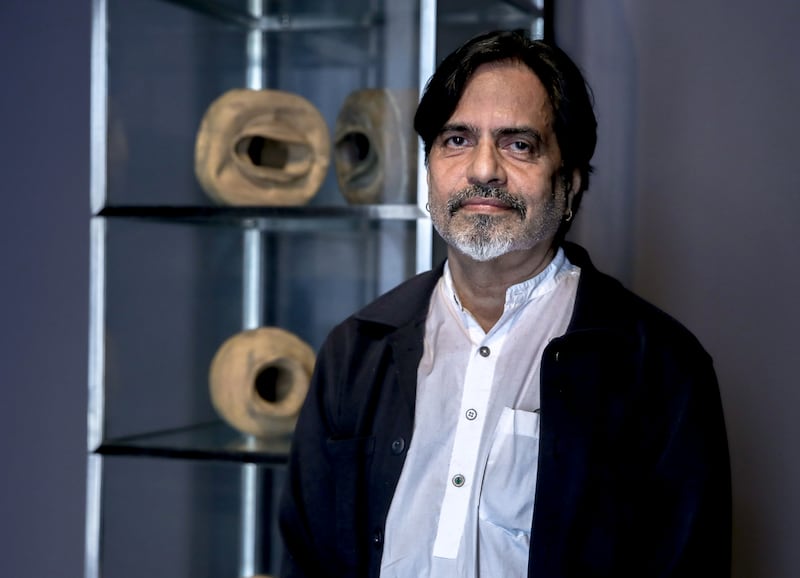In a major solo exhibition at Ishara Art Foundation, Mumbai artist Sudarshan Shetty presents a range of work that treads along the circle of life and death, drawing inspiration from Indian folklore and exploring themes of rebirth and repetition.
The exhibition, Only Life, Myriad Places, walks the line between dreams and wakefulness. It presents a survey of Shetty’s works that range from videos and multimedia installations to sculptures.
Only Life, Myriad Places opens with an untitled collection made up of six pairs of water utensils, displayed vertically within a glass column. Each pair consists of a metallic vessel found by Shetty, dented and misshapen with age, alongside a replica he made from wood.
“The historical connotation of utensils and rescuing them deeply connects with partition histories and migration histories,” says curator Sabih Ahmed. “A lot of people who move cities, either out of circumstance or by choice, carry their utensils with them. Many carve their names on to those utensils. These vessels are practically residues of the life you’ve left behind and the one you're carrying forward.”
The exhibition then moves on to its first video artwork, produced in 2013 and titled Waiting for Others to Arrive. It is presented as a single channel triptych that shows spectral occurrences within the same setting. The artwork is set in an abandoned Neoclassical building in Mumbai. Within the dilapidated structure, a musician performs on a sarinda, a traditional South Asian instrument, while objects manifest and vanish in the abutting frames, in scenes that give the sense of forking timelines.
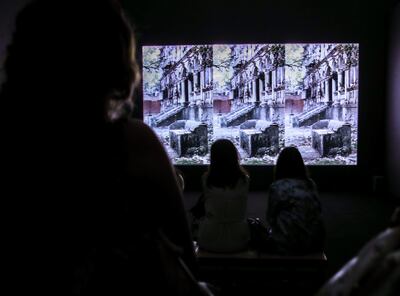
“The performer is a friend of Sudarshan’s,” Ahmed says. “She was a very good singer, but lost her singing voice in her 30s. The sarinda is considered closest to the human voice. She picked up the sarinda as a way to still continue singing.”
The most recent of the works on display that, in a way, lends its name to the exhibition, One Life Many is a 30-minute film. This takes its cues from a medieval Indian folk story that tells of a sage who transforms into another being and back, alluding to the multitude of selves we each carry within us.
The film begins with a man who walks into a body of water and emerges as a woman. The work features scenes that juxtapose wide shots of natural landscapes with the more tight settings of a traditional marketplace. As the film’s protagonist wanders through empty streets, bustling marketplaces and bus terminals, she begins recollecting her former life, before returning to the body of water and morphing back into a man.
“It is a rendering of [the medieval myth] in contemporary reality,” Ahmed says, noting that the film was produced as the world was gradually emerging from the pandemic. “Those old Indian stories had been retold so many times, so they keep adapting to the times and they also keep changing.”
The film contains several symbolic notes that resonate with India’s contemporary reality, such as a man drawing a cart of onions, the price of which had risen significantly due to the pandemic. Shetty also juxtaposes the wide natural landscapes of the body of water, shot with a professional camera on a tripod, with the scenes in the marketplace, which were filmed with mobile phones. The contrast helps evoke the dreamlike quality of the narrative and gives it the ethereal quality that is idiosyncratic of Shetty’s work.
There is also a very deliberate casting process within Shetty’s works, and specifically in One Life Many. The protagonists, he says, come from two different places within India. In a way, the video is a testament of the diversity of the Indian population.

“The first person looks like he is African, and there is a huge African population that came into India,” he says. “They have their own complex history. They’ve been in India for more than 500 years.” The second person, who the man transforms to, is a Tibetan who lives in Delhi.
“The idea of One Life Many is the possibility of being the other in ourselves,” Shetty says. “It’s a very famous story that was retold by Rumi at some point in time.”
Music and folklore are infused in the majority of Shetty’s artworks. A Song, A Story, a two-channel video piece, reinterprets a popular South Indian folktale, sung in the western Hindi language of Braj Bhasha, to tell the story of a woman whose husband returns home to find another man’s shoes outside her door.
The story is retold between the two screens, as well as on the television inside the video. The scenes resonate between each other, and again, the work inflicts a feeling of forking realities and timelines.
“It all has to do with the idea of retelling and repetition,” Shetty says. “The way repetition has been represented in art comes from western notions, but for us, repetition is entirely different.” Repetition, he says, is not so much reiteration but reinterpretation.
“It can only become new. The value of repetition is the fact that you make it your own,” Shetty says.
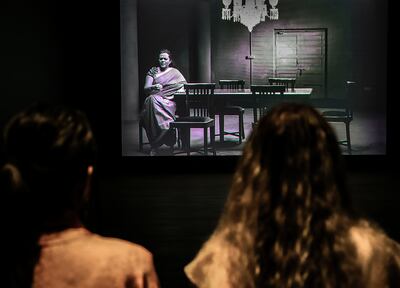
The exhibition’s conclusive piece, Age of Love, is a good example of this. In the video installation, six singers perform a musical composition that draws from Hindustani classical aspects.
The video presents the singers one at a time, all within the same indoor setting, with a chandelier hanging above a dining table and chairs. The singers come from different generations and turn the mezzanine floor of the gallery into a resonant, hypnotic space. Each has their own imprint on the composition, and each affects the space in an individual way.
“It’s the same song sung by people from across generations,” he says. “But the thing is, it becomes yours.”
Most, if not all, the works within Only Life, Myriad Places strike a resonant, meditative chord. Hypnotic at times and dizzying at others, the works are wonderful tributes to the rich histories, musical traditions and folklore of India.
The exhibition spans a mere eight pieces, which may seem like a modest number, but each of the works packs a transformative reverberation, buzzing you in and out of phase with yourself.
Only Life, Myriad Places by Sudarshan Shetty is on display at Ishara Art Foundation until December 9
